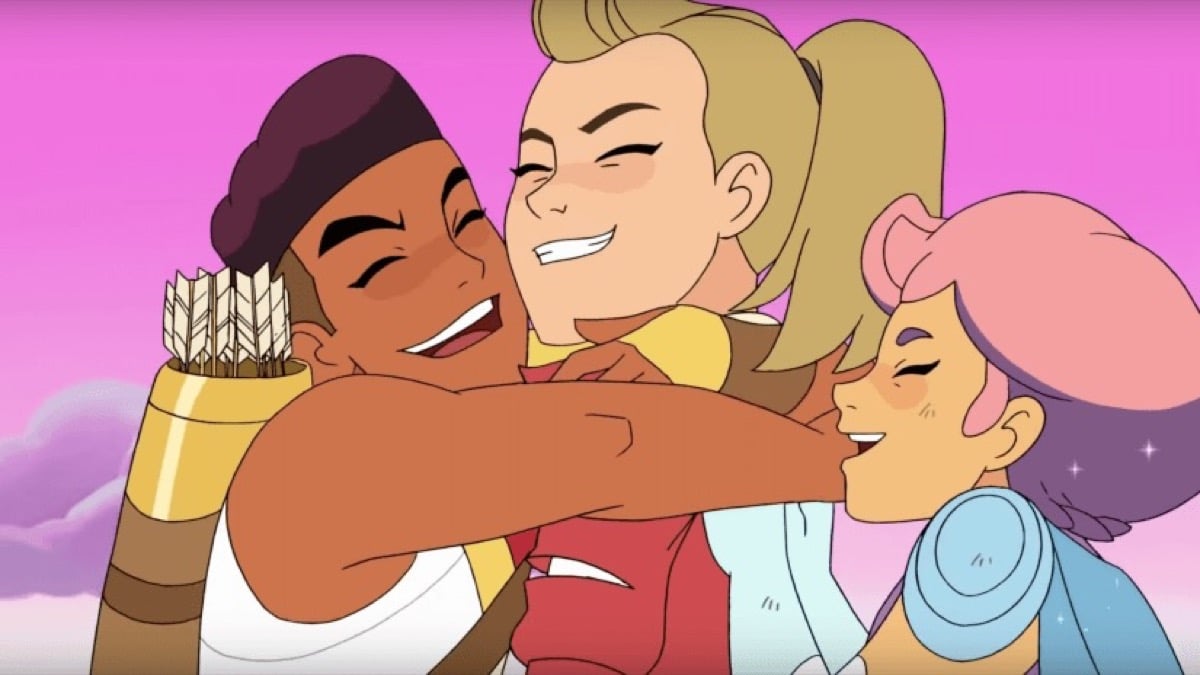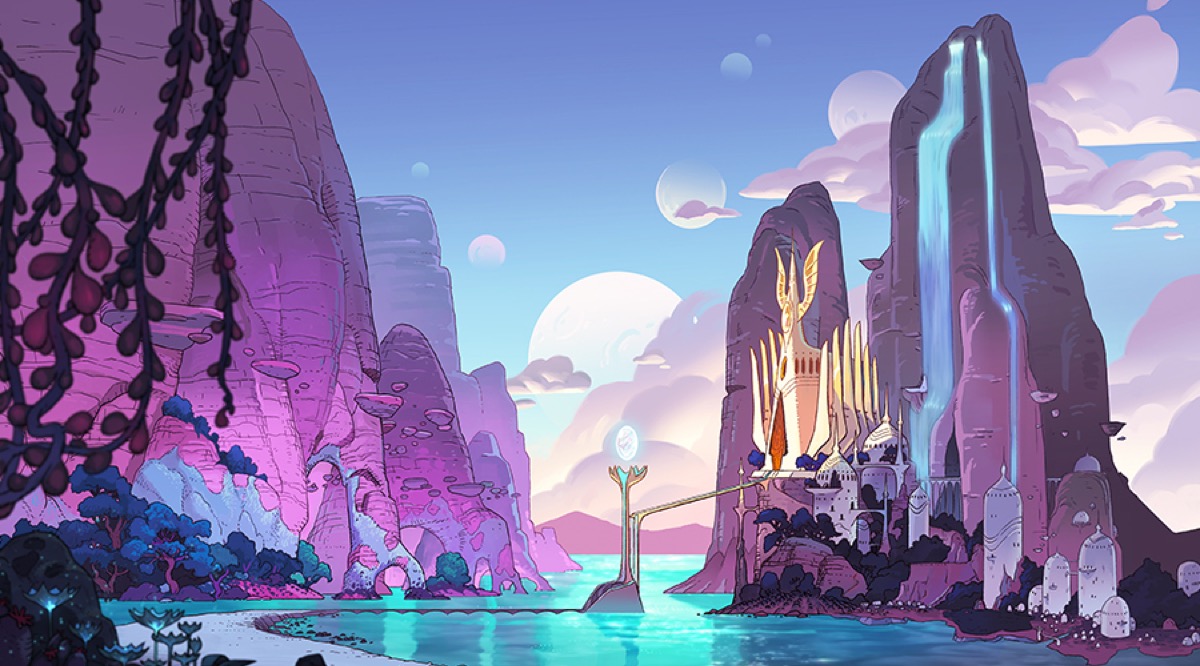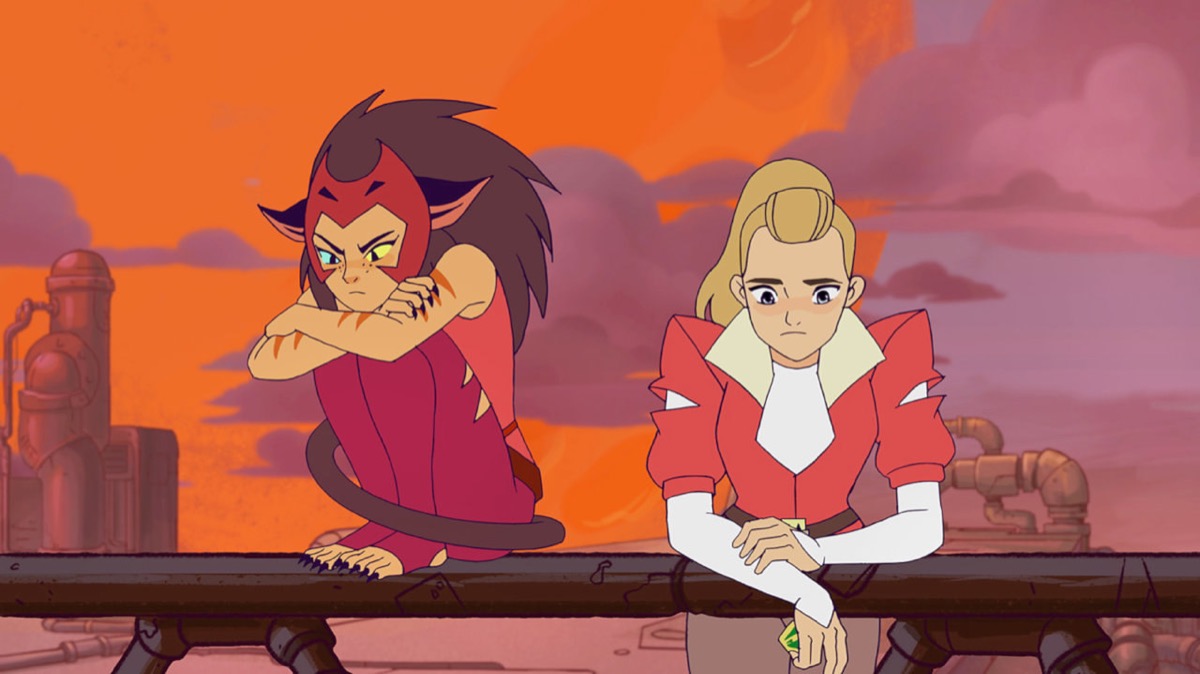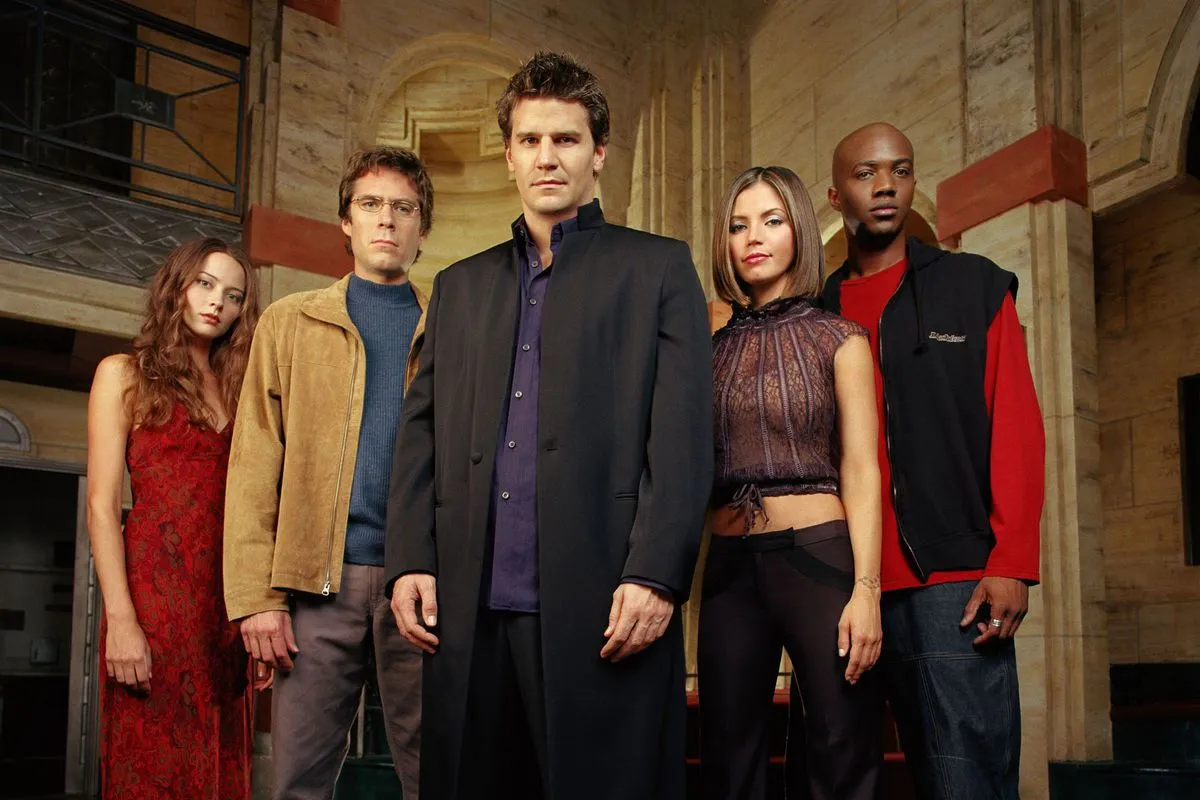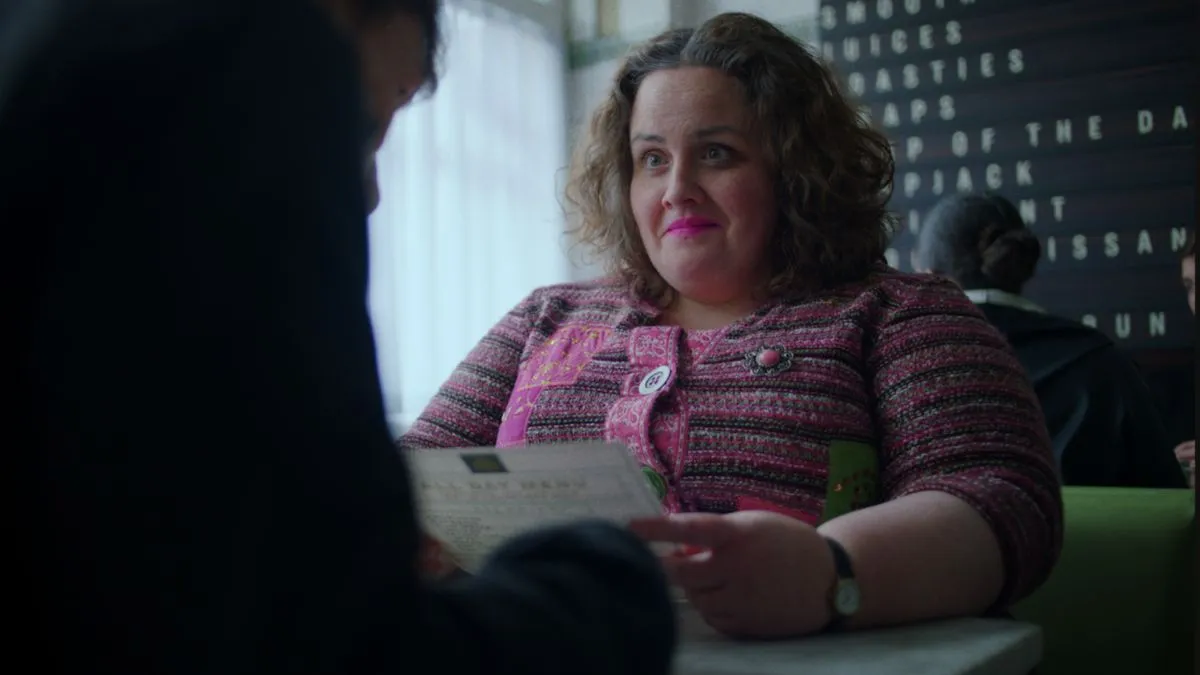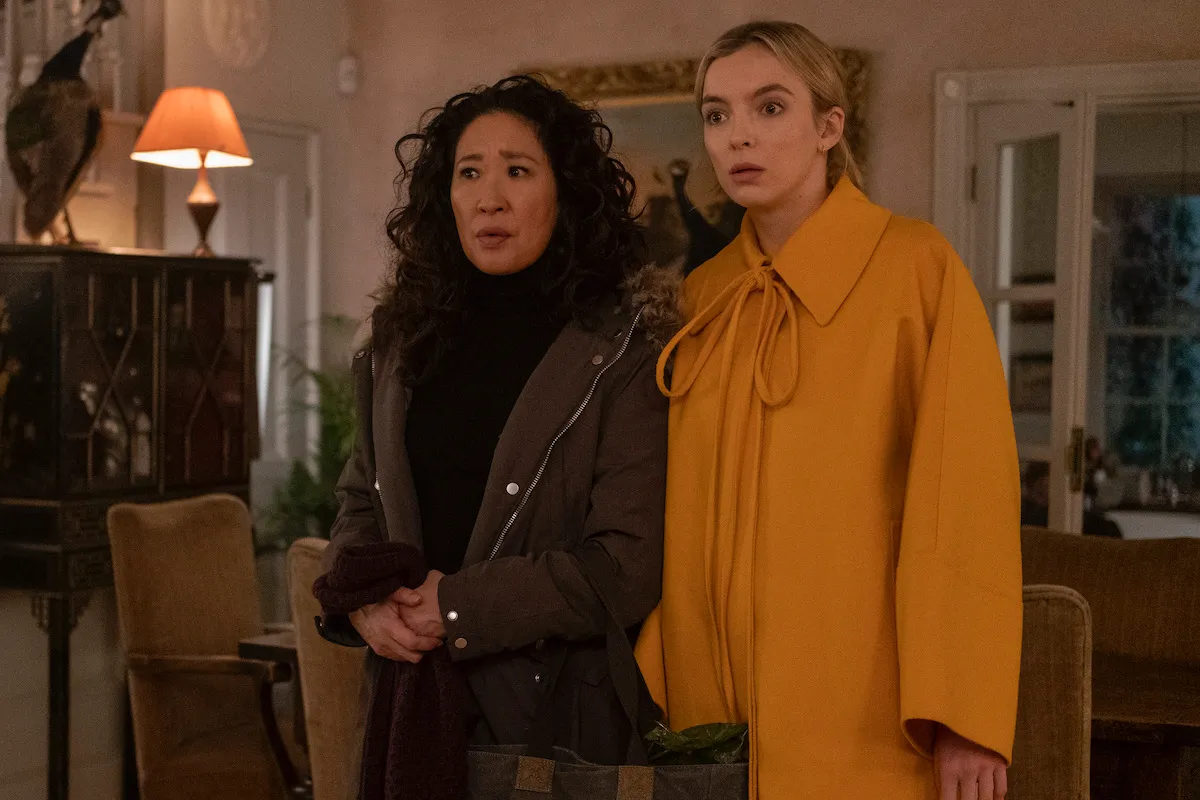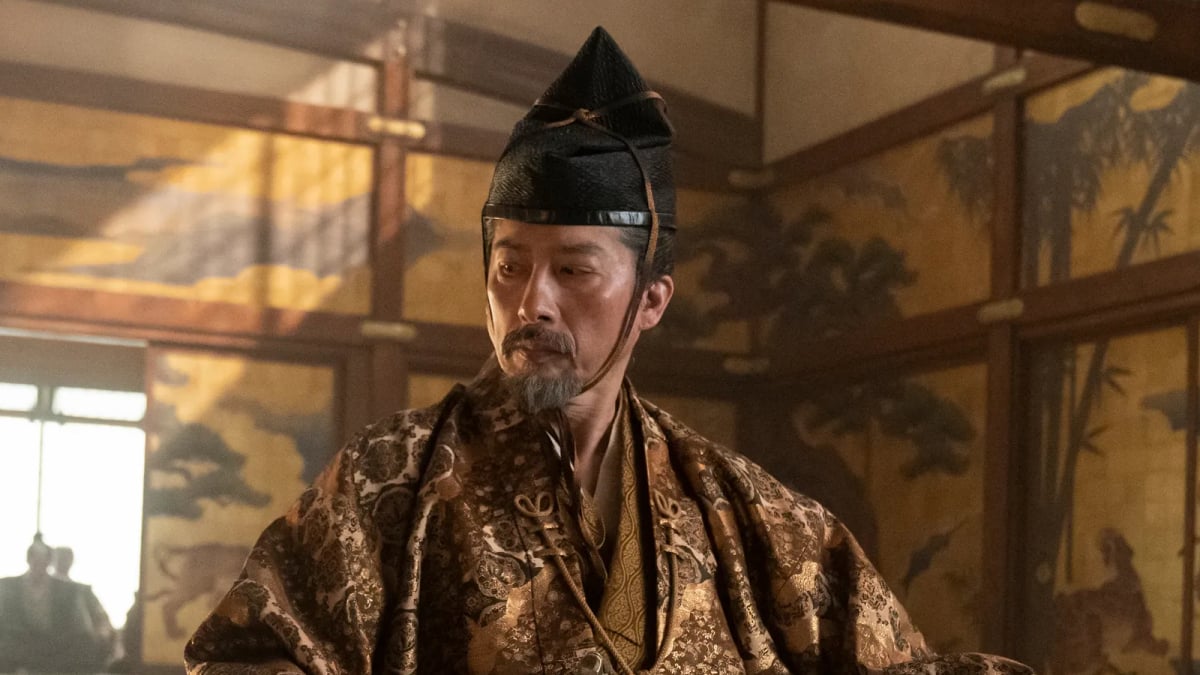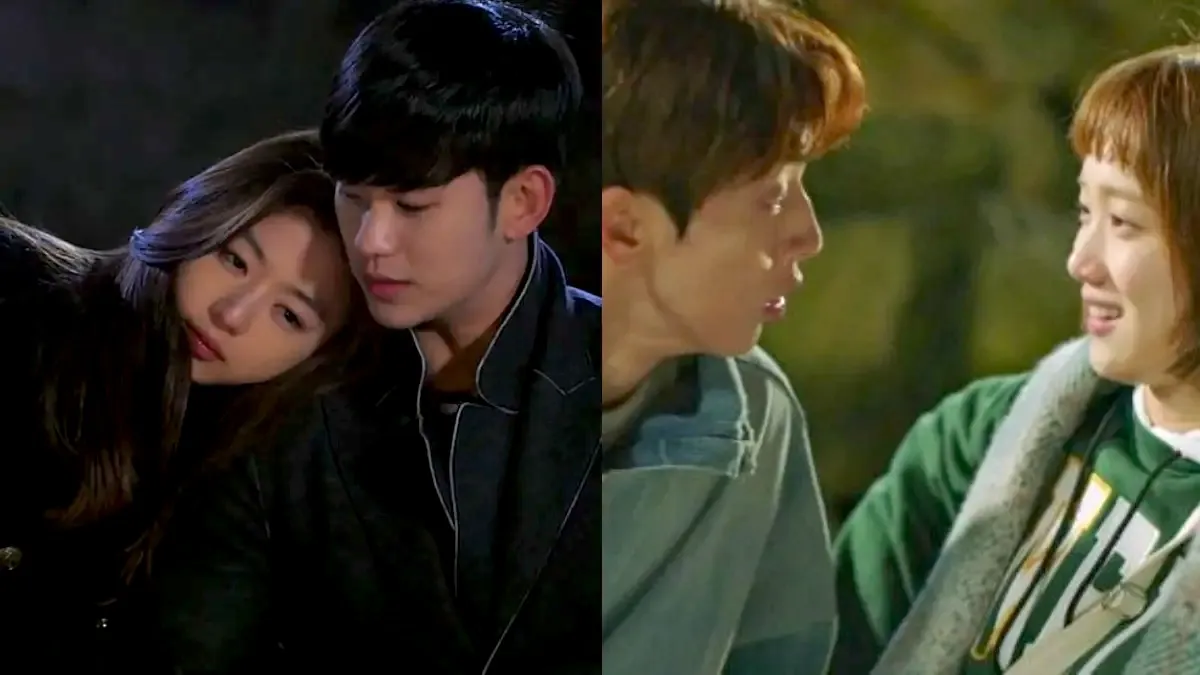**Don’t worry, as much as we’d love to Tom Holland this coverage, this interview is free of spoilers.**
In the year of reboots, She-Ra and the Princesses of Power is one of our most anticipated remakes. Sure, I might be biased because I grew up on the original 1980s series, but the new Netflix and Dreamworks She-Ra reboot gives us a refreshing spin on the classic story of Adora (Aimee Carrero) and the Evil Horde.
While the reimagined narrative is packed with enough nostalgic fuel to get us through the new year, the series is geared toward a younger audience and adds some long overdue, realistic representation to scripted animated series. That’s not to discredit She-Ra’s inclusive predecessors, such as The Legend of Korra and Steven Universe, that gave us positive LGBTQ+ representation.
However, it’s clear that She-Ra and the Princesses of Power is continuing in other shows’ animated footsteps by including openly queer characters. We already know about Bow’s two dads, thanks to Inverse. We don’t want to spoil anything or making it seem like we’re evasively queer-baiting you, but there are definitely two princesses that we ship.
Beyond LGBTQ+ representation that can help younger viewers redefine their own understanding of themselves and the people they love, She-Ra also includes body-positive characters that are anything but stereotypical. If the show’s mindful inclusivity isn’t enough to get you hooked already, Swift Wind, the talking pegasus, might just get you to binge through a few episodes in one sitting—or all of them. We aren’t judging.
The flying, talking horse. #SheRa pic.twitter.com/cKMlKaZm1C
— She-Ra and the Princesses of Power (@DreamWorksSheRa) November 9, 2018
It’s obvious that She-Ra and the Princesses of Power executive producer Noelle Stevenson was inspired by the original ’80s animated series. After all, we get to relive our favorite frenemies, Adora and Catra. However, the series, the characters, and the realm they live in are influenced by a culmination of other works and genres.
In an interview, Stevenson told us,
“I was very inspired by sci-fi and fantasy, especially from the ’70s and ’80s. When designing the world, there were a lot of influences drawn from Möbius, from Roger Dean, and those sort of paperback sci-fi book cover artists, who I just found so evocative and so exciting. Just that sort of aesthetic. I was a really huge fan of Star Wars growing up. I was a really huge fan of The Lord of the Rings. Those are influences that are present in all of my work, but especially in this one. They seemed a little bit more relevant because it is this really cool sci-fi and fantasy mashup world that is very character-centric.”
Watching the series, you can see the Princess-related universe—from the buildings to the forests—complement a lot of the mythical imagery that makes us so enamored with sci-fi and fantasy in general. Stevenson continued, “There’s a lot of weird influences in there, too, that you might not necessarily be expecting for a show about princesses like this. But all of the influences, even if they are sort of out there, they really did help build the show and the richness of the world and the mythology.”
“Because a lot of our crew is very inspired by anime, there is a pretty big anime influence throughout [the series]. It just seemed to make sense with the kind of magical girl aesthetics from the original,” Stevenson added.
Adapting the mythical world of Etheria isn’t an easy task. Paying homage to and expanding on the original She-Ra mythology, the series also changes some aspects of the original production to make it more relatable to its younger audience. “One of our biggest changes is that the characters are a little bit younger. This time around, we’re dealing more with sort of this transitional period between being a teenager and being an adult,” Stevenson mentioned.
Given Adora and Catra’s (A.J. Michalka) more than complicated relationship, the series doesn’t only focus on Adora’s journey towards becoming a hero. It also focuses on Catra’s jaunt to reclaiming her own independence outside of Adora’s shadow. “A lot of the characters are at a crossroads of deciding who they are, self-individuations, what their path is going to be as they go forward, and so we see the characters change a lot over the course of the show, as they pursue these different paths, develop as characters, and just evolve into something else,” Stevenson noted.
The character development in each of them parallels individuals’ growth in real-life. Given their unique personalities and struggles, each character’s growth looks a bit different, which can help young viewers relate with their own internal life. Sure, viewers might not be struggling with the new-found responsibility of finding the power sword and transforming into an elemental princess; however, they can learn from each character’s trials and tribulations.
Stevenson explained, “I think that a lot of what is powerful about coming of age stories is the voices of the characters. A character in the media, who always seems to make the right decision and always seems to have an easy time of figuring out what the right decision even is, doesn’t really embrace the depth of the experiences and struggles that real people feel.”
She-Ra’s new Netflix home also allows viewers to experience that cohesive character growth without having to wait for next week’s episode (although that just means jumping right to waiting for the next season). Stevenson explained the benefits:
“That’s something that I’m really excited to be able to do, especially in Netflix streaming. That way, we get to be very serialized and have a lot of continuity, which means we have a lot of over-arching plots, and we have a lot of mythology. That’s also something that is present in the original, but we get to be a little bit more overt with it—we get to play with it a little bit more than a show on a network would traditionally be able to. Because you’re not airing it all at one time, it might air out of order. So, being able to air it and know that people are going to watch several episodes at a time, most likely, was a really, really fun exercise in developing a story for TV.”
Coupled with the mythical animations and fight sequences, the heart of She-Ra and the Princesses of Power can help viewers make their awkward adolescence a little less awkward—or at least have a character or two (or six) that they can sympathize along their own messy cartoon journey. Stevenson walked us through why there was an added effort to make these characters so relatable:
“I really wanted to make sure that our characters felt real and relatable, and that people who are watching this can see themselves in the characters and not just see them in ways that aren’t just aspirational —and they are aspirational characters, but they’re also in, in a lot of ways, flawed characters, and they struggled to make the right choices, they fight for what’s right, but sometimes they failed.
“Some of them have very fatal flaws in their personality. Even the villains, you can sort of relate to in that way. Just showing that there was no right or wrong way to try to do the right thing. You can fail, but the important thing is that you try again and that you keep pushing through, you keep trying to do the right thing, even if it’s harder to even if you get it wrong, even if you aren’t sure what the right thing to do is.”
There’s plenty for older audiences to relate to, as well. Viewers can use certain characters as a way to heal from abuse or manipulative friendships, relationship, or even acquaintanceships.Stevenson notes,
“You can get back up, and you can be redeemed. If you’ve made a bad decision, or if you’ve been raised to be a certain way, and you are trying to create your own identity for yourself, those are the things that I really wanted to bring out [in the show] because those are the things that are relatable and relevant to young people who would be watching this. I want them to know that any of these characters are all so different from each other, and they could have elements that they relate to that they maybe don’t see that often. Also, they can just know that they can draw inspiration from how they always get back up and keep on fighting.”
Aside from these lessons, the show also sets out to empower young women, and it starts with adapting what power itself means, as Stevenson told us:
“I think that so often, we’re given characters, especially female characters, where it’s like here’s one female character that will often be in a cast of men. Because we don’t want to have any bad light on women or female characters in general, this character has to be very vetted. She has to be relatable to everybody. She has to carry every possible thing of this very, very broad umbrella of what it means to be a woman, which is just so infinitely huge in real life, that we don’t always get to see the richness of experience of what it actually means to be a woman in the world.”
Like in real life, there’s no one set definition for a woman, nor are there set characteristics that every woman has.
Thankfully, She-Ra understands that being a woman is a diverse, lived experience. Featuring young women characters who don’t get things right all the time allows the series to show its younger audience that it’s okay to be clueless, as long as you attempt to figure things out.
“Just seeing characters who again are messy, who don’t always do the right thing, and they’re not all one body type and not all one ethnicity, they’re not just one type of cookie cutter idea of what it means to be a woman,” Stevenson said.
Stevenson continued,
“There are so many ways to be a woman and everything within that is a story that I think is important to tell. So, that’s really what we set out to do, and I hope that people will draw inspiration from that, also feel inspired to tell their own stories and bring their own point of view to stories that we might not have heard from before. That is very exciting for me. I really hope we see more and more stories about more and more types of women being told by people who are qualified to tell them.”
Stevenson also explained that the convoluted line of what it means to be good and evil was purposefully constructed in the series to create a journey that viewers can relate to, beyond just the attributes we idolize:
“I think the whole show is about that journey, and about that struggle, especially for Adora. I think she’s somebody who was very confident in herself at the start of the show and what she was doing. She was completely convinced that what she was doing what’s right, and then her entire worldview and her whole faith were shaken when she realized that she had been on the side of evil the entire time. The show is a redemption arc for her, and I think that she is somebody who has very pure intentions.”
As the series follows Adora’s journey to the right side of the fight, it also discusses the complexity behind any major moral shift. During much of Adora’s journey, she battles her own internal monologue, mirroring the impostor syndrome many of us may feel in our everyday lives.
Stevenson expanded on Adora’s internal struggle:
“She always tries to do the right thing, and she always beats herself up trying to do it. It’s so much about her just trying to figure out what that means. After her confidence is shaken at the beginning of the show, she’s not confident in herself, and she’s not always confident in her grasp of what is right what the right thing to do, so she’s someone who needs a lot of support.
“She struggles a lot, even just internally with what the right thing to do is, and what the best way to do it is. Her biggest fear is that she could inadvertently hurt somebody. When that does happen, it’s something that she takes very hard, and she takes it very personally.
“We sort of see her struggle through this in the show in so many different ways. It’s all about her journey to being able to be confident in her ability to be good and effect good in the world, as well as she can—as well as learning to be a leader, learning to be a healer, learning to be someone who both needs support and to give support.
“I think there’s so much more to being a hero than just being really strong. At the beginning of the show, that’s what she’s best at, just fighting and punching things. Then, she realizes that there’s so much more to that—that her responsibility to the people around her is so much bigger than that.
“It’s an infinitely interesting sort of palette of experiences that we get to work through on this show, and I’m really excited for people to come with her on that journey.”
Before the show even debuted, certain people (*cough* men *cough*) criticized it for its character redesigns. The fierce redesigns feature multiple women warriors who look and act their own way. The characters also aren’t oversexualized like many mainstream depictions of animated women (in video games and cinema alike), which is important as self-esteem problems continue to grow in young women and girls, as The Guardian reports.
As Stevenson said,
“I do feel that as members of the media, we have a responsibility to show people as they really exist in the world, and that expands the boundaries of what you believe that you can do in the world. There are characters who are chubbier than they are in the original, but I wanted to show that that did not keep them from being free and powerful, like other characters. They can fly, they can teleport, they’re very nimble, they’re very scrappy, and they never back down from the battle.
“Oftentimes you see certain body types and different stereotypes associated with them, and I really wanted to get past that stereotype because they are just so many different ways to be a person in the world—to be a woman in the world. And I wanted to show that richness of experience without the same can be stream that we often are, we often feel from media, so I want kids to know that they don’t have to beat them to be strong, or to be fast, or to be, you know, fully fleshed out character with, like, so many different personality traits, and never make a joke of it.”
Stevenson broke down the benefits like this: “One, it makes the characters very distinct from each other, so they’re instantly recognizable. And two, it’s accurate to the world. There are so much body variants in everyone, so it just feels like that’s what you need to represent when you’re building a world that feels fully fleshed out and feels real.”
Whether you need Catra to help you cope with abuse, Adora to work through some intermittent (or constant) imposter syndrome, or you just relate to Bow for feeling like an outsider (even though you’re both definitely in the inner circle), the series has something to offer for everyone.
She-Ra and the Princesses of Power debuted on Netflix yesterday, November 13th.
(images: Netflix)
Want more stories like this? Become a subscriber and support the site!
—The Mary Sue has a strict comment policy that forbids, but is not limited to, personal insults toward anyone, hate speech, and trolling.—



